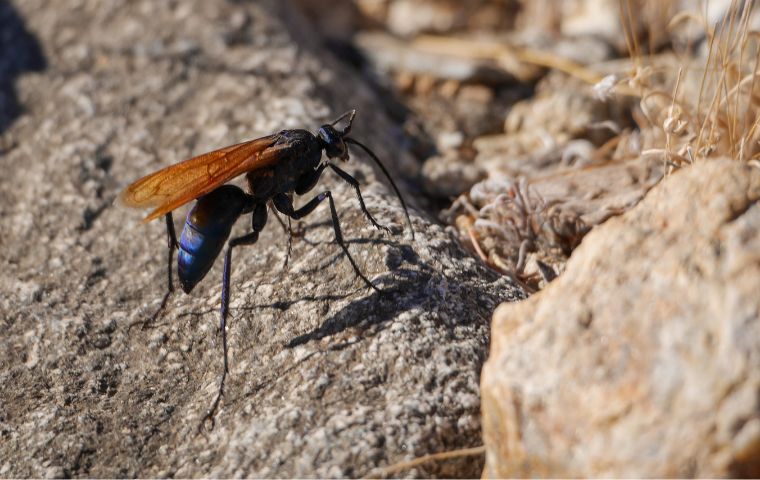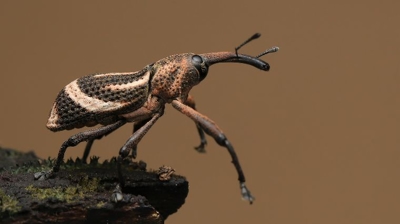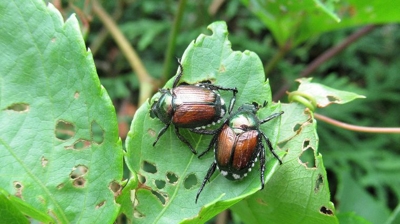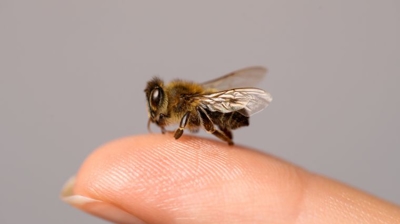
Tarantula Hawk Wasps
What Are Tarantula Hawk Wasps?
Tarantula hawk wasps are among the largest and most formidable wasps in the world, known for their striking appearance, powerful sting, and unique parasitic behavior. Scientifically, they belong to the family Pompilidae, specifically in the genera Pepsis and Hemipepsis. These solitary wasps are best known for their dramatic interactions with tarantulas, which serve as both a host and food source for their developing larvae.
Are Tarantula Hawk Wasps Harmful?
Tarantula hawk wasps, while not aggressive and generally not considered a widespread threat to humans or ecosystems, can still be considered harmful in certain contexts. Here are some of the potential ways they might be regarded as harmful:
Exceptionally Painful Sting
- The sting of a tarantula hawk is considered one of the most painful insect stings known to science. It ranks near the top of the Schmidt Sting Pain Index, described as intensely excruciating but brief (usually under 5 minutes).
- Though the pain subsides relatively quickly and the venom is not medically dangerous to most humans, the severity of the pain can cause panic, disorientation, or even accidental injury (e.g., if stung while driving, climbing, or operating machinery).
- Outdoor workers, hikers, pest control professionals, and others frequently in arid or desert regions where these wasps are found are at risk of being stung, as are individuals with insect sting allergies—though rare, anaphylactic reactions could occur.
Potential Threat to Pets or Domesticated Animals
- While they rarely sting animals, curious pets—especially dogs—may disturb these wasps and get stung in return. Due to the size and potency of the sting, this can be extremely distressing to animals.
- A sting on a sensitive area such as the face or paw could cause swelling, pain, and temporary incapacitation.
Negative Human-Wildlife Encounters
- Though non-aggressive, tarantula hawks may enter homes, garages, sheds, or other man-made structures in search of shade or nectar. Their large size and loud flight can alarm homeowners.
- Fear of the wasp’s sting may cause anxiety or panic, even though stings are rare.
Tarantula Hawk Wasp Appearance
Tarantula hawk wasps are visually striking and unmistakable due to their large size, vibrant coloration, and intimidating features. Their appearance is both a warning to predators and a signal of their formidable defensive capabilities. Here are some of their physical characteristics:
- Size: Tarantula hawk wasps are among the largest wasps in the world. Most species range from 1.5 to 2 inches (38 to 50 mm) in length, with some reaching up to 2.5 inches (65 mm). Their wingspan can stretch up to 4 inches (100 mm).
- Body Coloration: Typically metallic blue-black, steel-blue, or purplish-black with a glossy sheen. This iridescent coloring helps them stand out and serves as a visual deterrent to predators.
- Wing Coloration: Often a bright orange or rusty reddish color, though some species have smoky black or dark brown wings. The contrast between the dark body and bright wings is a form of aposematic coloration, warning of their painful sting.
- Wings: Long, narrow, and semi-transparent. Distinctive, fluttering flight pattern—loud and almost humming, especially when hovering near flowers.
- Antennae: Long and curved, especially in males. Female antennae are more robust, aiding in sensory perception during hunting.
- Legs: Exceptionally long and spindly, often with curved claws on the ends to help them grip and wrestle tarantulas. Legs may appear slightly orange or rust-colored depending on species.
- Eyes: Large, prominent compound eyes, giving them strong vision—critical for spotting prey and navigating.
- Abdomen: Elongated and smooth with minimal banding or segmentation visible externally. The stinger (in females) is concealed but can be up to 7 mm (nearly 1/4 inch) long.
- Females: Larger and more robust. Equipped with the powerful stinger used for hunting tarantulas and self-defense. Spend more time on the ground or near tarantula habitats.
- Males: Slightly smaller and slimmer. Lacking a stinger. Spend more time flying and feeding on nectar. They sometimes establish territories around flowering plants to attract females.
If you spot a wasp that fits this description—especially in desert or dry scrubland environments—it's almost certainly a tarantula hawk.
Tarantula Hawk Wasp Habitat
Tarantula hawk wasps are most commonly found in warm, arid, and semi-arid regions around the world, with a strong presence in desert and scrubland ecosystems. They thrive in environments where tarantulas are abundant, as their life cycle depends on these spiders for reproduction. Tarantula hawks are especially common in the American Southwest, where their preferred desert habitats are widespread:
- Arizona – Particularly abundant in the Sonoran Desert; the Pepsis grossa species is even designated as the state insect of Arizona.
- New Mexico
- Texas – Especially in the western and central regions.
- Nevada, California (especially southern and inland areas), and Utah – Found in desert and chaparral zones.
Habitat types:
- Deserts (Sonoran, Mojave, Chihuahuan)
- Dry grasslands
- Rocky canyons
- Scrublands and mesquite thickets
Tarantula Hawk Wasp Diet
Tarantula hawk wasps have a dual diet that differs dramatically between the adult and larval stages. Their feeding habits are highly specialized and adapted to their unique life cycle.
Adult Diet (Nectar Feeders)
- What They Eat: Nectar from flowers is the primary food source for adult tarantula hawks. They feed on a variety of flowering plants, especially those native to arid and semi-arid regions.
- Why Nectar? Nectar provides the energy-rich sugars adults need for sustained flight, mating, and—for females—hunting tarantulas. Despite their fearsome appearance, adult tarantula hawks do not hunt or consume other insects or spiders themselves.
- Feeding Behavior: Adults are often seen hovering around flowers or perching while feeding. Males may establish small territories around flowering plants and defend them from rivals, in hopes of attracting females.
Larval Diet (Parasitic Carnivores)
- What They Eat: Larvae feed exclusively on the paralyzed body of a single tarantula provided by the mother.
- How It Works: The female wasp hunts a tarantula, stings it to paralyze but not kill it, and drags it into a burrow. She lays a single egg on the spider’s abdomen, then seals the burrow. When the egg hatches, the larva slowly consumes the tarantula while it is still alive, avoiding vital organs to prolong the spider’s life (and freshness) as long as possible. After several days of feeding, the larva pupates within the tarantula’s body cavity and eventually emerges as an adult.
- Purpose of Live Prey: The tarantula must remain alive for as long as possible to prevent the meat from decaying. This ensures the larva has access to fresh, uncontaminated protein for development.
Tarantula Hawk Wasp Life Cycle
The life cycle of tarantula hawk wasps is a fascinating example of parasitism, precision hunting, and metamorphosis, shaped by evolutionary specialization. Their life cycle revolves entirely around the use of a single tarantula as a host for their developing young. Here is the tarantula hawk’s life cycle:
- Mating (Reproduction Stage):Typically occurs in late spring through summer, during the active season. Males often establish and defend small territories around nectar-rich plants to attract females. Once a receptive female arrives, mating occurs briefly on the ground or on vegetation. Males do not participate in raising offspring and die shortly after mating.
- Hunting and Paralyzing a Tarantula: After mating, the fertilized female searches for a suitable tarantula host, usually in the early morning or late afternoon when the ground is cooler. She locates tarantulas by sensing vibrations near burrows and actively probing the ground or luring the spider out. A deadly struggle follows. The female stings the tarantula, delivering a potent venom that paralyzes but does not kill the spider. She may spend several minutes grappling with the much heavier tarantula before delivering the sting to the underside or near the leg joints.
- Transport and Burrow Preparation: Once the tarantula is immobilized, the female drags the spider—sometimes several times her own weight—over a considerable distance to a previously dug burrow or prepares a new one. This process may take hours and requires navigating uneven desert terrain.
- Egg Laying (Oviposition): Inside the burrow, the female lays a single egg on the tarantula’s abdomen, usually on a soft area near the leg base. Then seals the burrow with soil and debris to protect the larva from predators and the environment.
- Larval Development (Parasitic Stage): The egg hatches within a few days. The larva attaches itself to the tarantula and begins to feed externally, but very selectively. It avoids vital organs to keep the host alive and fresh as long as possible. Over the course of 1–2 weeks, it slowly consumes the tarantula.
- Pupation (Metamorphosis): After the tarantula is fully consumed, the larva spins a silken cocoon inside the burrow (sometimes within the spider’s exoskeleton). Enters the pupal stage, during which it undergoes complete metamorphosis. This stage may last several weeks or months, depending on the species and climate.
- Adult Emergence: When development is complete, the adult wasp chews its way out of the cocoon and burrow to emerge above ground. It dries its wings and becomes sexually mature within a few days. The adult immediately begins feeding on nectar and seeking mates to repeat the cycle.

Hear From Our Happy Customers
-
"Very Knowledgeable"
The tech that arrived was courteous, professional, and very knowledgeable. He was Great.
- Uerial I. -
"Wonderful Service"
Wonderful service. Jarvis is great. Took care of everything I needed. Thank you!
- Henry P. -
"Fantastic & Patient"
Jarvis was fantastic and patient. He answered my questions with an in-depth explanation and addressed all of my areas of concern. Would love for him to be my assigned tech going forward. Well done!
- Yonnette M. -
"Exceeds Expectations"
I can’t say enough positive things about this company... The tech that came out, Jarvis went above and beyond my expectations. Thank you guys, I will continue using your services.
- Jake M. -
"Professional & Considerate"
I’m pleased with Miche services. Jarvis came today. Professional and considerate. Thank you!
- Judy B. -
"Great Communication"
Tech was on time, communication was great, and he accommodated my needs.
- Alonzo W.



